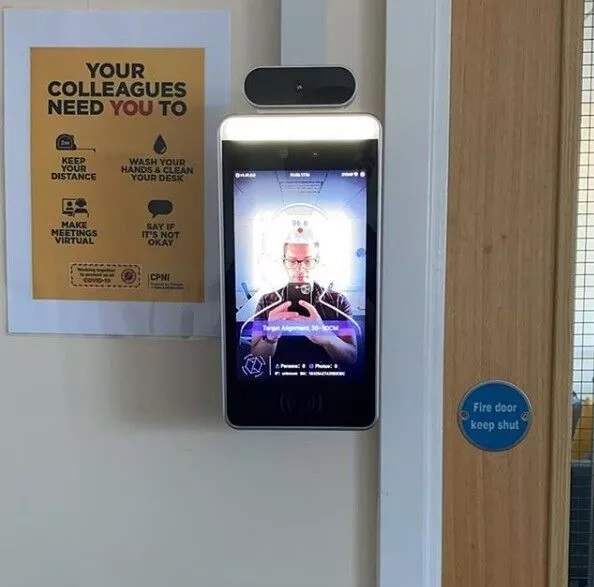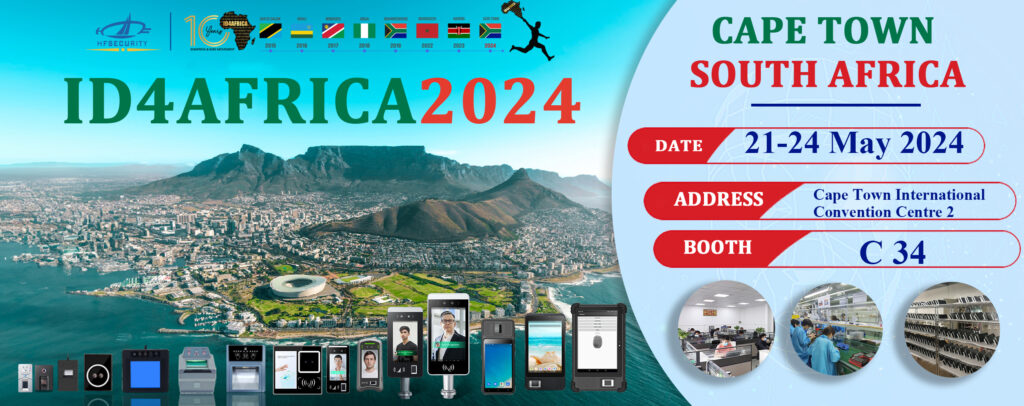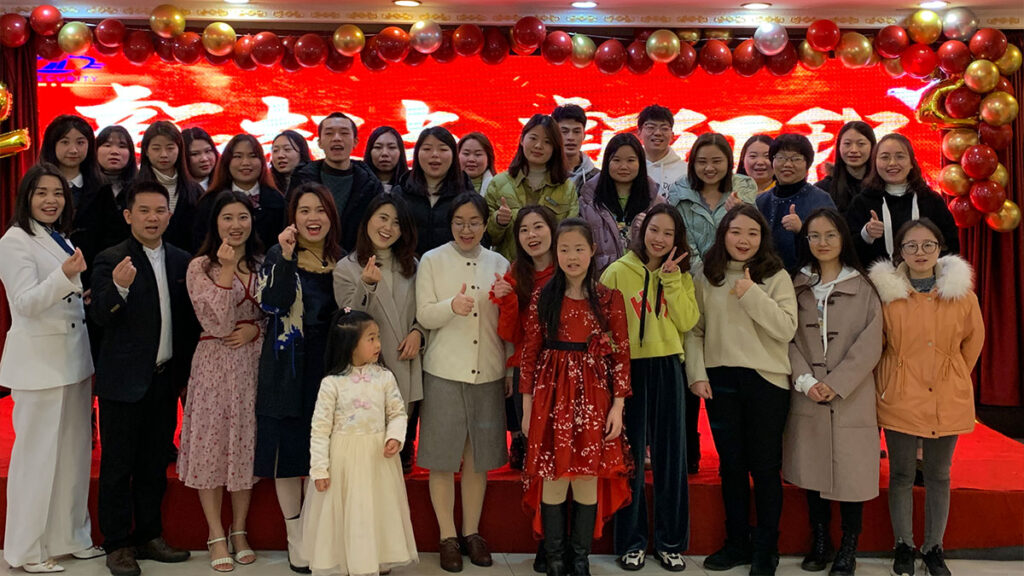Face recognition system is a new biometric technology with face recognition technology as its core, and is a highly sophisticated technology that is being attacked in the international science and technology field today.
Technology introduction
Face recognition technology is based on the human face characteristics, to the input face image or video stream. Firstly, it determines whether there is a human face, and if there is a human face, it further gives the position, size and location information of each major facial organ. In a broad sense, face recognition actually includes a series of related technologies for building face recognition system, including face image acquisition, face positioning, face recognition pre-processing, identity confirmation and identity finding, etc.; while in a narrow sense, face recognition specifically refers to the technology or system for identity confirmation or identity finding through faces.
The biometric features studied by biometric recognition technology include face, fingerprint, palm print, iris, retina, voice (voice), body shape, personal habits (such as the strength and frequency of keyboard tapping, signature), etc. The corresponding recognition technologies are face recognition, fingerprint recognition, palm print recognition, iris recognition, retina recognition, voice recognition (voice recognition can be used for identity recognition and also for voice content recognition, only the former belongs to biometric recognition technology), body shape recognition, keyboard tapping recognition, signature recognition, etc.

HFSecurity Face Recognition System Terminal
Second, the principle of technology
Face recognition technology contains three parts.
(1) Face detection
Face detection refers to determining whether a face image exists in a dynamic scene with a complex background and separating such a face image. There are generally several methods as follows.
①Reference template method
first design a template or several templates of standard faces, then calculate the degree of match between the test collection samples and the standard templates, and determine the presence of faces by thresholding.
②Face rule method
Since faces have certain structural distribution features, the so-called face rule method that extracts these features to generate corresponding rules to determine whether the test samples contain faces.
③Sample learning method
This method, i.e., using the method of artificial neural network in pattern recognition, i.e., generating classifiers by learning from the face sample set and non-face sample set.
(iv) Skin color model method
This method is based on the law of relative concentration of face skin color distribution in color space for detection.
(2) Face Tracking
Face tracking refers to the dynamic target tracking of the detected faces. Specifically, a model-based approach or a combined motion-based and model-based approach is used. In addition, the use of skin color model tracking is not a simple and effective means.
(3) Face comparison
Face comparison is the identification of the detected face image or the target search in the face image library. In fact, it means that the sampled face image is compared with the stock face image in turn and the best match is found mainly using two description methods: feature vector and face pattern template.
① Feature vector method
This method is to determine the size, position, distance and other attributes of the facial contours of the iris, nose, mouth corners and other facial images before calculating their geometric features, which form a feature vector describing the facial image.
②Face pattern template method
This method is to store a number of standard face templates or face organ templates in the library, and to match all pixels of the sampled face image with all templates in the library using the normalized correlation metric when performing comparison.
Face image pre-processing
Face image preprocessing: Image preprocessing for faces is the process of processing images based on face detection results and eventually serving for feature extraction. The original image acquired by the system is often not directly usable due to various conditions and random interference, and it must be pre-processed with grayscale correction, noise filtering and other image pre-processing at the early stage of image processing. For face images, the pre-processing process mainly includes light compensation, grayscale transformation, histogram equalization, normalization, geometric correction, filtering and sharpening of face images.
Face image feature extraction
Face image feature extraction: The features that can be used in face recognition system are usually divided into visual features, pixel statistical features, face image transformation coefficient features, face image algebraic features and so on. Face feature extraction is done for certain features of the face. Face feature extraction, also known as face characterization, is the process of feature modeling of a human face. The methods of face feature extraction are summarized into two major categories: one is knowledge-based characterization methods; the other is characterization methods based on algebraic features or statistical learning.
Knowledge-based characterization methods are mainly based on the shape descriptions of face organs and the distance characteristics between them to obtain feature data that can help face classification, and their feature components usually include Euclidean distance, curvature and angle between feature points. The human face consists of parts such as eyes, nose, mouth, and chin, etc. Geometric descriptions of these parts and the structural relationships between them can be used as important features for face recognition, and these features are called geometric features. Knowledge-based face characterization mainly includes geometric feature-based methods and template matching methods.
Face recognition systems, which widely use area feature analysis algorithms, integrate computer image processing technology and biostatistics principles in one, using computer image processing technology to extract portrait feature points from videos and using biostatistics principles to analyze and establish mathematical models, have a broad development prospect.
Applications
The Mexican government’s use of facial recognition systems can be described as one of the most innovative uses of this technology, and they use it to identify fraudulent voters (through duplicate registration). In order to control election results, people register multiple times under different names so that they can vote multiple times. It is not easy to find these people using traditional methods.
Many people do not go to bank counters to withdraw money, but use cash machines. Facial recognition eliminates the potential for criminal activity.
With facial recognition technology, officials can find duplicate registered voters by searching the voter database for facial images. They compare the new images with records on file to find people who are trying to register using multiple names. This technology was used in Mexico’s 2000 presidential election, and is expected to be applied to local elections soon.
Other potential applications include security at ATMs and during cash withdrawals. The software can quickly verify a customer’s face. With the user’s consent, the ATM or withdrawal counter takes a digital photo of the customer. The FaceIt software then uses that photo to generate a facial print, avoiding customer identity theft and fraudulent transactions. With the use of facial recognition software, there is no need to use an ID card, bank card or personal identification number (PIN) to confirm a customer’s identity.
This biometric technology can also be used to secure computer files. IBM has incorporated this technology into the screen saver on its A, T and X series Thinkpad laptops.
Facial recognition software can be used to lock your computer.
Although facial recognition technology can be used to protect your private information, it is easy to hack into a system and gain access to your privacy by simply taking a picture without you noticing. Like many other evolving technologies, facial recognition technology, while having incredible potential, still has some flaws.
On March 5, 2013, New York State Governor Andrew Cuomo announced that the state had used facial recognition technology to investigate 13,000 cases of ID fraud, resulting in 2,500 arrests and an additional 5,000 people facing criminal investigations. U.S. driver’s licenses and ID cards are issued centrally by the Department of Motor Vehicles, and a car license is equivalent to an ID card. According to the New York State government, beginning in 2010, the New York State Department of Motor Vehicles used facial recognition technology to match all applicant photos with more than 20 million photos in its database and found 13,000 suspicious driver’s licenses or ID cards, with some people even having multiple ID cards under different names at the same time.

HFSecurity Face Recognition System Application
July 2013. A Finnish company launched the world’s first “face” payment system. When checking out, consumers simply face a camera on the POS screen at the register, and the system automatically takes a photo, scans the consumer’s face, and then clicks on the touch screen to confirm the transaction after the identity information is displayed. No credit card, wallet or cell phone is required. The entire transaction process does not exceed 5 seconds. However, some people believe that “this time, usually just enough to take out your wallet”. Finnish startup Uniqul has applied for a patent for this facial recognition-based “face” payment system.



